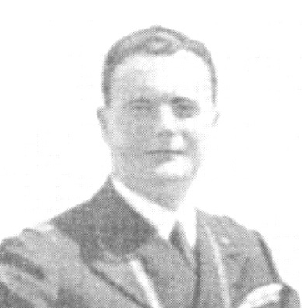The “Eritrea” was a military vessel, launched in 1937, conceived for long-range operations in the Italian colonies (it was classified as a “colonial ship”). Displacing 2100 tons, it was armed with two twin 120mm gun mountings and was capable of a maximum speed of 19 knots.
When the war broke out it was stationed in the harbor of Massawa in Italian East Africa together with other light units, notably the “Leone” and “Nazario Sauro” class destroyers. In February 1941 the situation in East Africa was dire for the Italians. Isolated from the motherland, the land forces had been progressively repelled and depleted, while the few ships available were bombed in port by British planes.
With the capitulation of the colony approaching, it was decided that the Eritrea would have tried to avoid capture by attempting a breakout into the Indian Ocean, destination Japanese-controlled bases in the East. The ship loaded several additional fuel barrels to increase its autonomy and left Massawa on the night of the 19th of February 1941, under the command of frigate captain Marino Iannucci.
To increase the chances of avoiding the British blockade, Captain Iannucci (an expert Hydrographer) decided to cross the shallow and dangerous waters near the Island of Perim (at the entrance of the Gulf of Aden), betting on the absence of British surveillance in that area. His plan worked out and, under the cover of darkness, the Eritrea left the Red Sea and entered the Indian Ocean.

Commander Marino Iannucci
After the successful crossing, the Eritrea spotted an enemy vessel, fastly approaching its position. It was a British auxiliary cruiser, seemingly ready to engage the Italian ship. Captain Iannucci ordered his crew to battle stations, ready for a final stand against a superior enemy. However, Iannucci and his men were lucky, the enemy ship, at a 15km distance, changed course and disappeared. The Eritrea was temporarily safe, but it had been spotted, paving the way to possible future air attacks or naval interception.
On the 22nd of February, there was another contact with an enemy vessel, the Eritrea rapidly maneuvered and laid a smokescreen which allowed to break contact with the British unit.
After some calm days of navigation, the Eritrea was in the middle of the Indian Ocean and the risk of being spotted/attacked by aircraft had practically vanished. Morale was high, and the crew believed that they could finally “make it”. The crossing of the Indian Ocean progressed with no new hostile encounters and on the 11th of March, the Eritrea was in sight of the Dutch-controlled East Indies. Here, another difficult choice lay ahead.

The Eritrea in the port of Massawa
At the time, there was no war status between Italy and the Netherlands (by then occupied by Germany while its colonies had joined the Allies) so there is no risk of a clash with the Dutch units. However, they could easily report the position of the Eritrea to the British forces in Singapore or the Australians in Darwin. Iannucci then decided to take another risky gamble, he took a route for the Alor Strait and the island of Timor, which was controlled by Portugal in the eastern portion. Iannucci ordered his men to disguise the Eritrea as a Portuguese vessel. Iannucci searched in the naval almanac at his disposal for a Portuguese ship that could resemble the Eritrea. He found one, in the end, the small vessel Pedro Nunez. The crew repainted the ship and raised a second fake funnel and a second mast to disguise the Eritrea. They were soon spotted by a Dutch recognizance plane flying over their heads. They immediately raised the Portuguese flag and identified themselves as the Pedro Nunez.

The voyage of the Eritrea
With a considerable share of luck, the trick worked out and during the night the Eritrea safely crossed the Alor strait. Some days later, the lucky ship spotted another warship quickly approaching its position, the crew was once again ordered to battle stations but this time the Japanese flag raised on the approaching Cruiser allowed for a general scream of jubilee.
The Eritrea finally arrived in the Japanese port of Kobe after 32 days and 17.334 km of navigation, achieving something very close to the impossible.

A picture of the Eritrea signed by some of the crew members

The Eritrea in drydock in Kobe (Japan)
The Eritrea continued to operate in Asian waters until September 1943, when it was reached by the news of the armistice. Captain Iannucci, loyal to the King, escaped the surveillance of the Japanese fleet and reached British-controlled Ceylon.
The Eritrea operated as a submarine support vessel for the allied navies until 1944 when it returned to Italy for a short period before sailing again for the far east to carry on the sumbarine support duties. It remained in this area until April 1946 when finally returned to Italy.
The small lucky ship was handed over to the French navy in 1948 as part of war reparations and took part in several operations revolving around the war in French Indochina during the 50s. The Eritrea, now renamed Francis Garnier, was placed in reserve in 1966 and was finally used as a floating target for a nuclear test near the atoll of Mururoa. The ship sunk on the 29th of October 1966 and its wreck lays at 1300m in the Pacific waters.
Sources
Bagnasco, E. (2005). In guerra sul mare.
Giorgerini, G. (1994). Uomini sul fondo.
Pellegrini, L. (1976). L’avventuroso raid della “Eritrea”. Storia illustrata n.219.